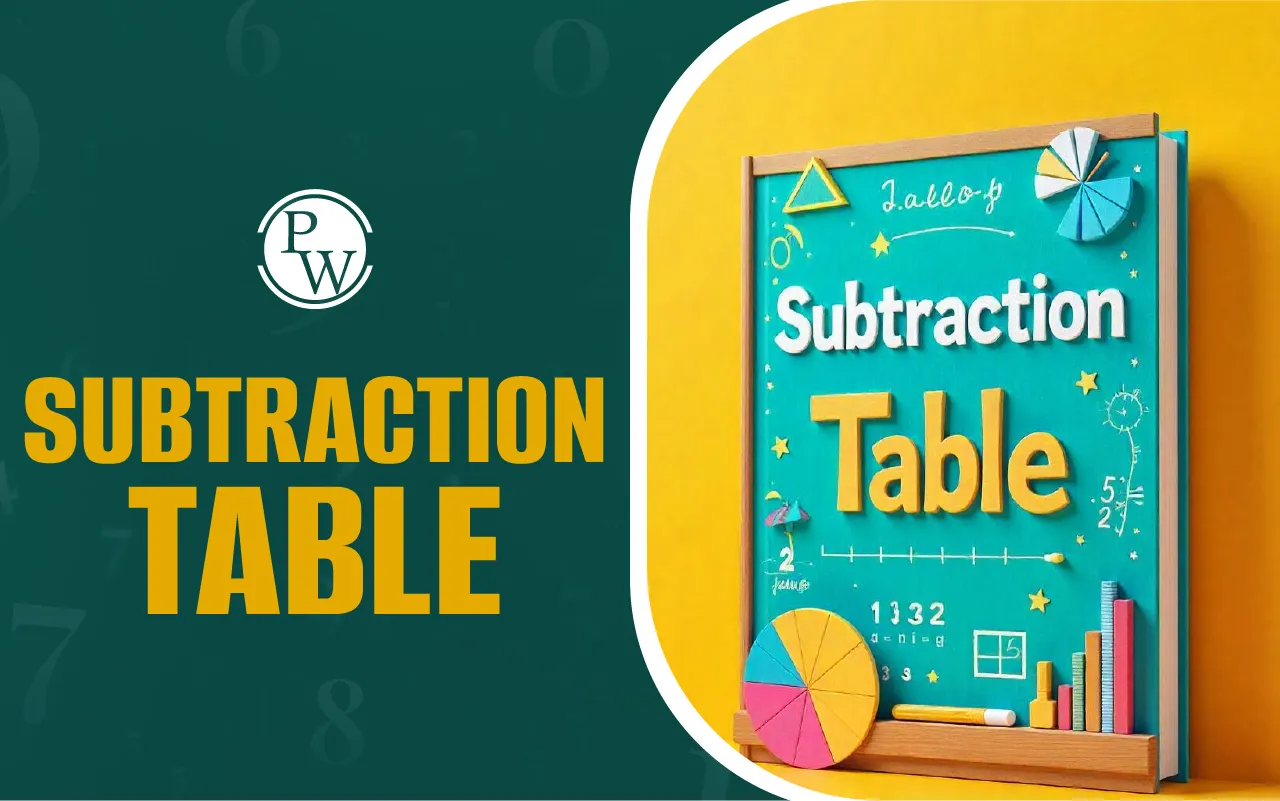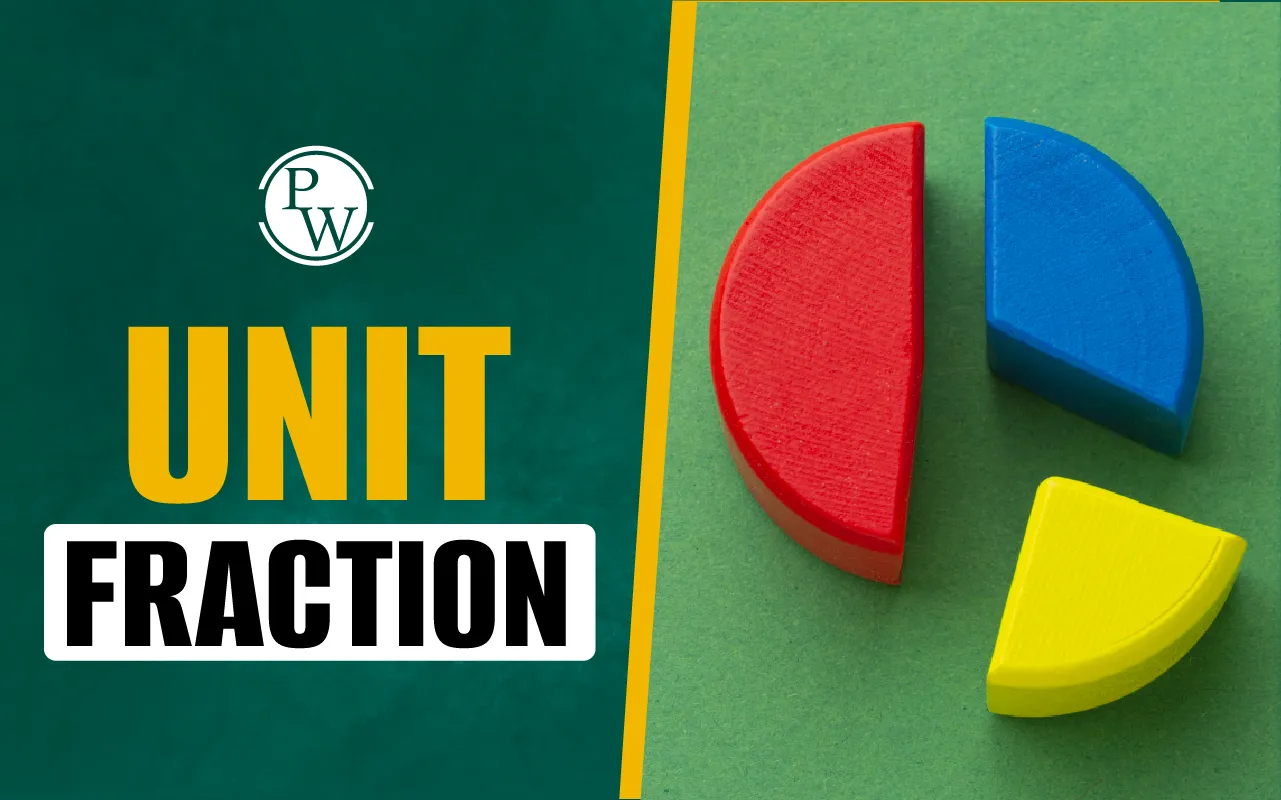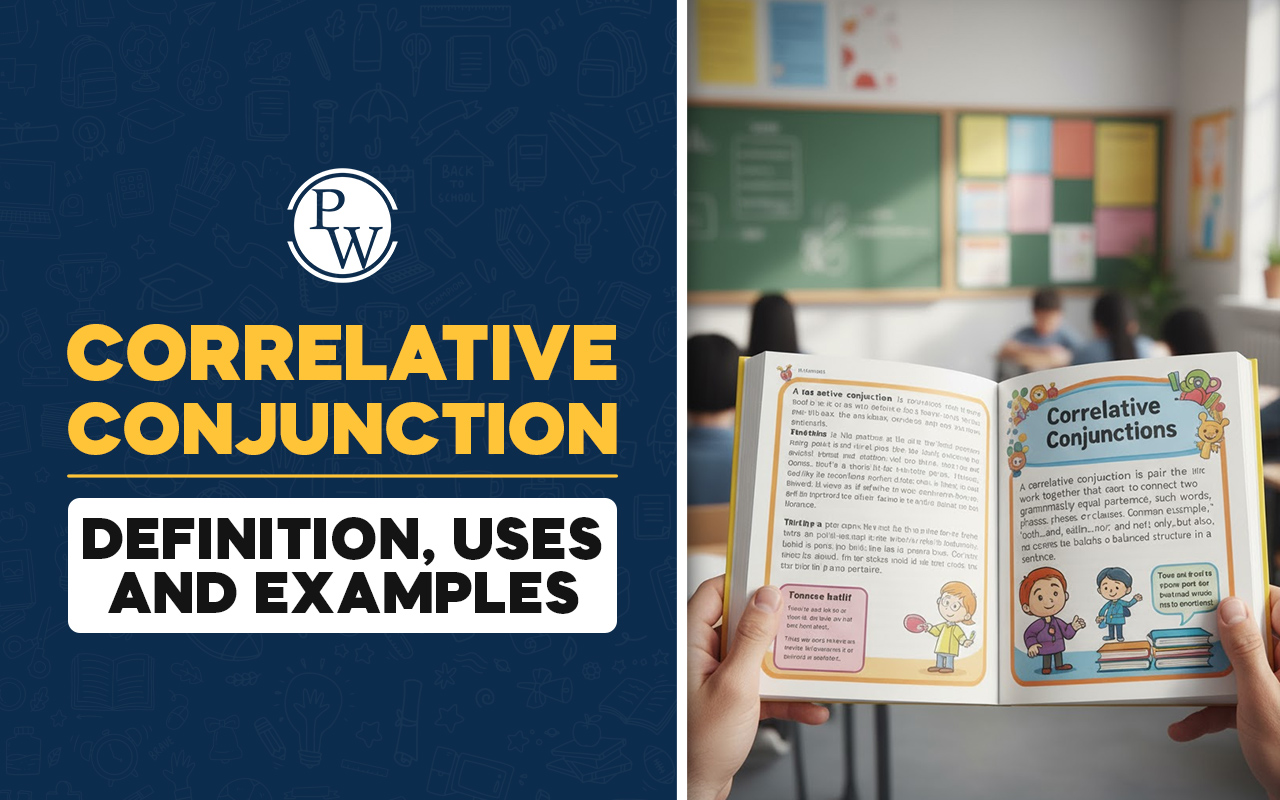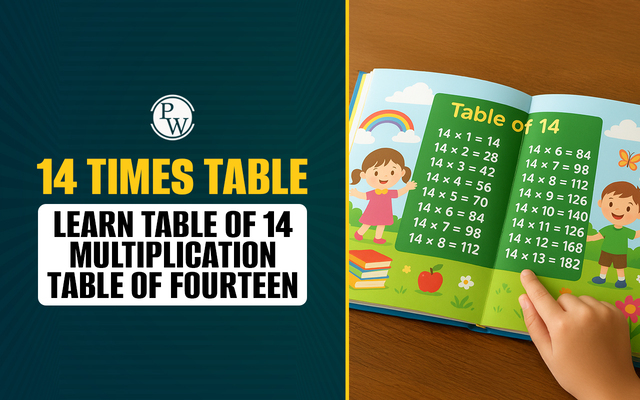
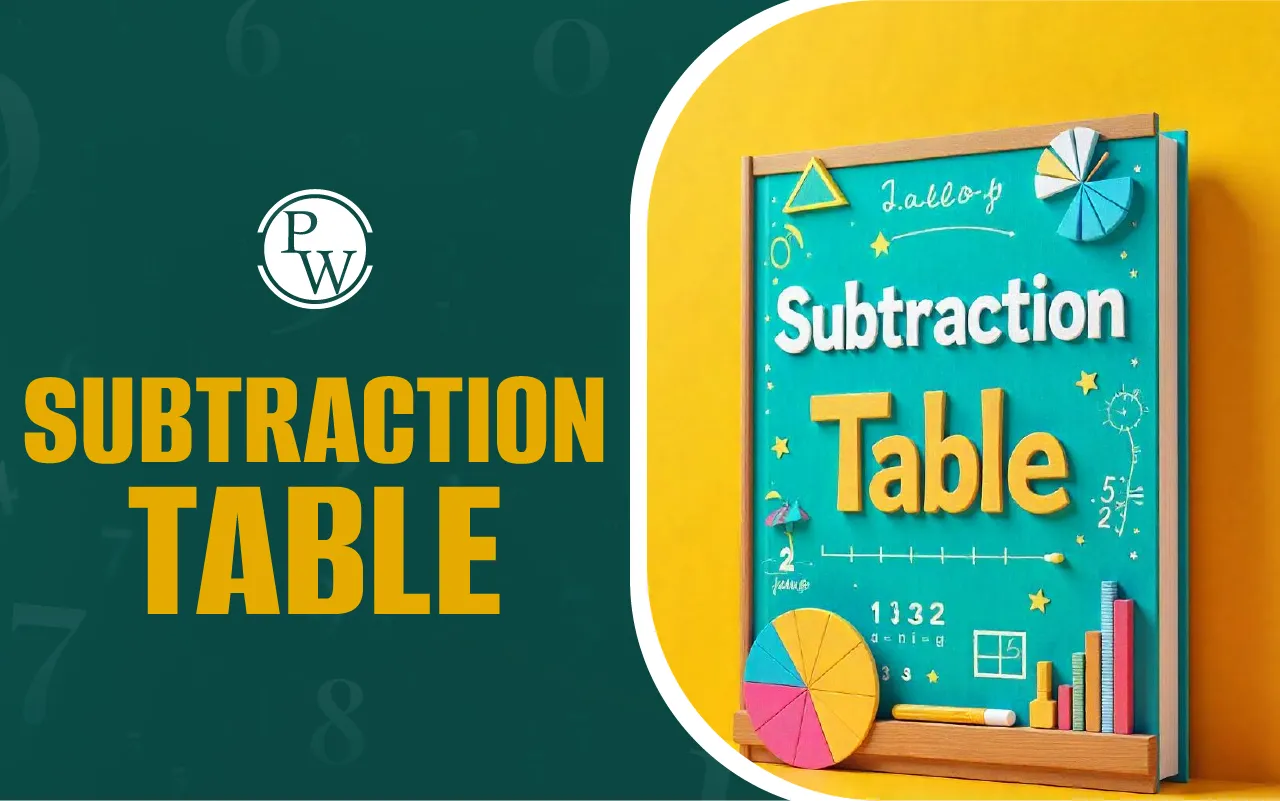
A subtraction table is a chart that helps us find the difference between two numbers quickly, just by looking, without needing to calculate each time. It is a systematic arrangement of numbers in rows and columns, where the top row and the leftmost column show the numbers involved in subtraction.
Each box in the table shows the result when one number is subtracted from another. This kind of table is especially helpful for children who are learning subtraction, as it makes the process easier and helps them notice number patterns.
To use the table correctly, students should be familiar with the terms minuend (the number being subtracted from) and subtrahend (the number being subtracted).
What is a Subtraction Table?
A subtraction table is a grid format that displays the differences between two numbers. Much like a multiplication or addition table, a subtraction table allows students to quickly look up answers to subtraction problems without having to calculate them manually every time.
For example, to find the result of 5 - 3, one would find the row for 3 and the column for 5, and the intersection would show the answer: 2.
This concept helps solve problems and makes it easier for young learners to improve their mental math skills and understand numbers better.
Read More: Multiplication Tables
What is a Subtraction Chart?
A subtraction chart is another term for a subtraction table, but often refers to printed or digital visuals used in classrooms and homes. Charts are an excellent way for children to internalize the concept of subtraction.
Most subtraction charts are structured as follows:
-
Numbers are arranged from left to right (minuends) across the top.
-
The subtrahends are listed vertically on the left.
-
Each cell in the table shows the difference between the number at the top (minuend) and the number on the side (subtrahend).
This tabular structure makes it easy to cross-reference and see the results instantly.
How to Read a Subtraction Table?
A subtraction table or subtraction chart helps you quickly find answers to subtraction problems. It is a great tool for students who are learning how to subtract and want to practice without always doing long calculations.
Let’s take an example to understand how to read a subtraction table:
Example: 9 − 4
Step 1: Look first for the number 9 in the top horizontal row. This is the number you are subtracting from.
Step 2: Now find the number 4 in the first column on the left. This is the number you are subtracting.
Step 3: Move along the row of 4 and down the column of 9 until they meet. The number in that cell is the answer.
The answer here is 5, as 9 minus 4 equals 5.
Subtraction Table |
|||||||||||
|
- |
10 |
9 |
8 |
7 |
6 |
5 |
4 |
3 |
2 |
1 |
0 |
|
1 |
9 |
8 |
7 |
6 |
5 |
4 |
3 |
2 |
1 |
0 |
-1 |
|
2 |
8 |
7 |
6 |
5 |
4 |
3 |
2 |
1 |
0 |
-1 |
-2 |
|
3 |
7 |
6 |
5 |
4 |
3 |
2 |
1 |
0 |
-1 |
-2 |
-3 |
|
4 |
6 |
5 |
4 |
3 |
2 |
1 |
0 |
-1 |
-2 |
-3 |
-4 |
|
5 |
5 |
4 |
3 |
2 |
1 |
0 |
-1 |
-2 |
-3 |
-4 |
-5 |
|
6 |
4 |
3 |
2 |
1 |
0 |
-1 |
-2 |
-3 |
-4 |
-5 |
-6 |
|
7 |
3 |
2 |
1 |
0 |
-1 |
-2 |
-3 |
-4 |
-5 |
-6 |
-7 |
|
8 |
2 |
1 |
0 |
-1 |
-2 |
-3 |
-4 |
-5 |
-6 |
-7 |
-8 |
|
9 |
1 |
0 |
-1 |
-2 |
-3 |
-4 |
-5 |
-6 |
-7 |
-8 |
-9 |
|
10 |
0 |
-1 |
-2 |
-3 |
-4 |
-5 |
-6 |
-7 |
-8 |
-9 |
-10 |
Read more: International Number System
How to Create a Subtraction Table?
Creating a subtraction table is a great way to practice math and understand subtraction better. You do not need a computer, you can make one using just a piece of paper, a pencil, and a ruler.
Let’s learn the steps to create a subtraction table for numbers from 13 to 1.
Step 1: Draw a square grid with 14 rows and 14 columns. This gives space to write 13 numbers across the top and 13 numbers down the side, plus one extra row and one extra column for labels.
Step 2: In the top-left corner of the grid, write the word "subtraction" to show that this table is for subtraction.
Step 3: In the top row, starting from the second box, write the numbers from 13 to 1 from left to right. These are the numbers you will subtract from. They are called the first numbers.
Step 4: In the first column on the left side, starting from the second box, write the numbers from 1 to 13 from top to bottom. These are the numbers you will subtract. They are called the second numbers.
Step 5: Now, begin filling in the empty boxes. For each box, look at the number at the top of the column and the number at the beginning of the row. Subtract the top number from the side number. Write the answer in the box.
For example, in the first row, the number on the left is one. That means we subtract one from each number written across the top:
-
Thirteen minus one equals twelve
-
Twelve minus one equals eleven
-
Eleven minus one equals ten
-
Ten minus one equals nine
-
Nine minus one equals eight
-
Eight minus one equals seven
-
Seven minus one equals six
-
Six minus one equals five
-
Five minus one equals four
-
Four minus one equals three
-
Three minus one equals two
-
Two minus one equals one
-
One minus one equals zero
So, the first row will be filled like this - 13, 12, 11, 10, 9, 8, 7, 6, 5, 4, 3, 2, 1, 0
This is how you can make your own subtraction table. Below is a subtraction table for numbers from 1 to 13. You can also try creating a subtraction table from 1 to 100 for extra practice.
Subtraction Table |
|||||||||||||
|
- |
13 |
12 |
11 |
10 |
9 |
8 |
7 |
6 |
5 |
4 |
3 |
2 |
1 |
|
1 |
12 |
11 |
10 |
9 |
8 |
7 |
6 |
5 |
4 |
3 |
2 |
1 |
0 |
|
2 |
11 |
10 |
9 |
8 |
7 |
6 |
5 |
4 |
3 |
2 |
1 |
0 |
-1 |
|
3 |
10 |
9 |
8 |
7 |
6 |
5 |
4 |
3 |
2 |
1 |
0 |
-1 |
-2 |
|
4 |
9 |
8 |
7 |
6 |
5 |
4 |
3 |
2 |
1 |
0 |
-1 |
-2 |
-3 |
|
5 |
8 |
7 |
6 |
5 |
4 |
3 |
2 |
1 |
0 |
-1 |
-2 |
-3 |
-4 |
|
6 |
7 |
6 |
5 |
4 |
3 |
2 |
1 |
0 |
-1 |
-2 |
-3 |
-4 |
-5 |
|
7 |
6 |
5 |
4 |
3 |
2 |
1 |
0 |
-1 |
-2 |
-3 |
-4 |
-5 |
-6 |
|
8 |
5 |
4 |
3 |
2 |
1 |
0 |
-1 |
-2 |
-3 |
-4 |
-5 |
-6 |
-7 |
|
9 |
4 |
3 |
2 |
1 |
0 |
-1 |
-2 |
-3 |
-4 |
-5 |
-6 |
-7 |
-8 |
|
10 |
3 |
2 |
1 |
0 |
-1 |
-2 |
-3 |
-4 |
-5 |
-6 |
-7 |
-8 |
-9 |
|
11 |
2 |
1 |
0 |
-1 |
-2 |
-3 |
-4 |
-5 |
-6 |
-7 |
-8 |
-9 |
-10 |
|
12 |
1 |
0 |
-1 |
-2 |
-3 |
-4 |
-5 |
-6 |
-7 |
-8 |
-9 |
-10 |
-11 |
|
13 |
0 |
-1 |
-2 |
-3 |
-4 |
-5 |
-6 |
-7 |
-8 |
-9 |
-10 |
-11 |
-12 |
Read More: Cubes 1 to 20
Subtraction Table Patterns
When we look at a subtraction table, we can find some interesting and useful patterns. These patterns help us understand how subtraction works and make it easier to use the table.
Now let’s look at what patterns we can see:
Step 1: Diagonal of Zeros
This diagonal runs through cells where the row and column numbers are the same (like 13 − 13, 12 − 12, 11 − 11, and so on). In all these cases, you are subtracting a number from itself. The result is always 0.
This creates a line of zeros from the top-right to the bottom-left of the table.
Step 2: Positive Numbers Appear Above the Diagonal
In the upper part of the table (where the row number is greater than the column number), we get positive answers.
For example:
-
13 − 10 = 3
-
12 − 5 = 7
-
9 − 2 = 7
These are the places where we subtract a smaller number from a larger one.
Step 3: Negative Numbers Appear Below the Diagonal
In the lower part of the table (where the row number is smaller than the column number), we get negative answers.
For example:
-
4 − 7 = −3
-
2 − 12 = −10
-
1 − 13 = −12
This shows what happens when we subtract a larger number from a smaller one.
This pattern helps students quickly understand the relationships between numbers in subtraction and makes it easier to guess or check subtraction answers without doing full calculations.
Educational Games Using the Subtraction Table
Subtraction doesn’t have to be boring! Here are some engaging activities using subtraction tables:
-
Dice Game: Roll two dice and subtract the smaller from the larger using the table.
-
Table Treasure Hunt: Hide numbers around the room and solve subtraction problems to find clues.
Flash Card Drills: Use cards with subtraction questions that must be answered using the chart within seconds.
Using the subtraction chart in fun activities helps children learn better and keeps them interested.
Read More: Indian Numeral System
Subtraction Table Facts
-
A subtraction table shows many subtraction problems and their answers all in one place, so you do not have to solve each one every time.
-
The numbers written across the top are the ones you start with when subtracting.
-
The numbers written down the left side are the ones you take away.
-
Each box in the table shows the answer to the subtraction, which is called the difference.
-
Looking at the table and using it often helps you remember subtraction answers more quickly and makes learning easier.
Subtraction Table Solved Examples
-
What is 5 − 2 using the subtraction table?
|
6 |
5 |
4 |
3 |
2 |
1 |
0 |
|
|
1 |
5 |
4 |
3 |
2 |
1 |
0 |
-1 |
|
2 |
4 |
3 |
2 |
1 |
0 |
-1 |
-2 |
|
3 |
3 |
2 |
1 |
0 |
-1 |
-2 |
-3 |
|
4 |
2 |
1 |
0 |
-1 |
-2 |
-3 |
-4 |
|
5 |
1 |
0 |
-1 |
-2 |
-3 |
-4 |
-5 |
|
5 |
0 |
-1 |
-2 |
-3 |
-4 |
-5 |
-6 |
Solution:
Step 1: Find row 5 on the left.
Step 2: Move to column 2 at the top.
Step 3: Find where they meet →
So, 5 − 2 = 3
Answer: 3
-
Ravi had 6 candies. He gave away 2 to his friends. How many candies does he have now?
Solution:
Step 1: Find 6 in the first column (left side).
Step 2: Find 2 in the top row (column).
Step 3: Where they meet is the answer.
Answer: 4
So, Ravi has 4 candies (he gave away more than he had).
Maths becomes easier when learning feels fun. CuriousJr Mental Maths Booster helps your child improve their speed, build confidence, and enjoy solving problems step by step. Enroll now and make learning a part of their daily joy.

